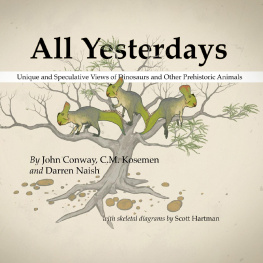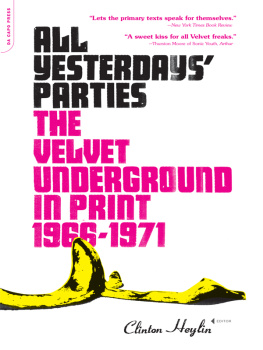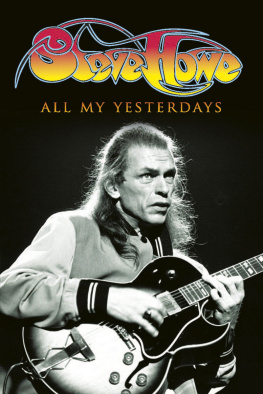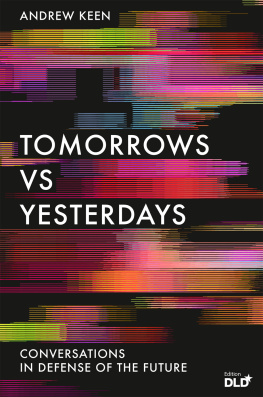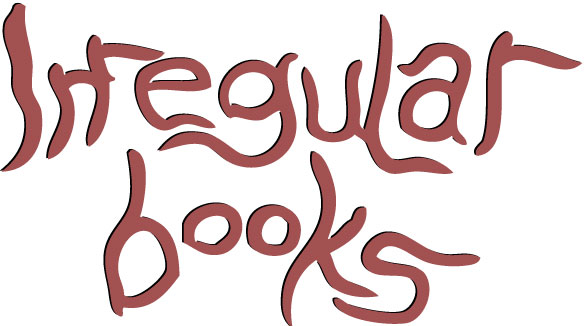Acknowledgements
We are thankful to our families and friends, whose love and support helped us through the making of this book. Several of our colleagues have provided feedback and discussion that helped shape our ideas. In particular Mike Taylor and Matt Wedel were generous with their encouragement and discussion.
We thank the late Dan Varner for discussion on the history of palaeoart; and Tim Isles, Luis Rey, Mark Witton and Steve White for thoughts on palaeobiology and palaeoart.
We thank John's wife, Jenny, for her support and proof-reading.
C. M. Kosemen would like to extend special thanks towards his parents, brother and sister for their unconditional love, support and friendship.
About the Authors
John Conway
Artist & Author
John Conway is a palaeontological and fine artist, who's work has been used for National Geographic, Discovery Channel and the American Museum of Natural History, among others. His work has most recently appeared in Dinosaur Art: the World's Greatest Paleoart. John's interest in the methodology and culture of reconstructing of palaeontological subjects is the genesis of this book.
Website: johnconway.co
Twitter: @nyctopterus
Facebook: facebook.com/nyctopterus
C.M. Kosemen
Artist & Author
C. M. Kosemen holds a Media and Communications Masters' degree from Goldsmiths College, and has worked as an editor in Benetton Company's Colors magazine. He has had several exhibitons of his evolution-themed fine art at galleries and science festivals internationally. Kosemen's areas of specialization are speculative & real zoology, history and unusual things in general. His previous work includes Snaiad, a self-initiated web project about life on an alien planet.
Website: www.cmkosemen.com
Facebook: facebook.com/memo.kosemen
Darren Naish
Author
Darren Naish is a science writer, technical editor and palaeozoologist. Darren works mostly on theropod and sauropods dinosaurs, but also works on pterosaurs, marine reptiles, and other tetrapods. With colleagues, he named the dinosaurs Eotyrannus, Mirischia and Xenoposeidon. Darren has written several books, including Walking With Dinosaurs: The Evidence (co-authored with David M. Martill), Great Dinosaur Discoveries, and more recently Tetrapod Zoology Book One. His blog, Tetrapod Zoology, is widely considered the world's foremost zoology blog.
When not writing about tetrapods, Darren can be found pursuing his interest in modern wildlife and conservation and its resulting adventures in lizard-chasing, bird-watching and litter-collecting.
Website: blogs.scientificamerican.com/tetrapod-zoology/
Twitter: @TetZoo
Scott Hartman
Illustrator
Scott Hartman is a palaeontologist and illustrator who specialises in creating skeletal diagrams of dinosaurs and other animals to the highest degree of scientific accuracy. Scott's skeletal drawings form the basis of many other artist's work.
Website: skeletaldrawing.com
Twitter: @skeletaldrawing
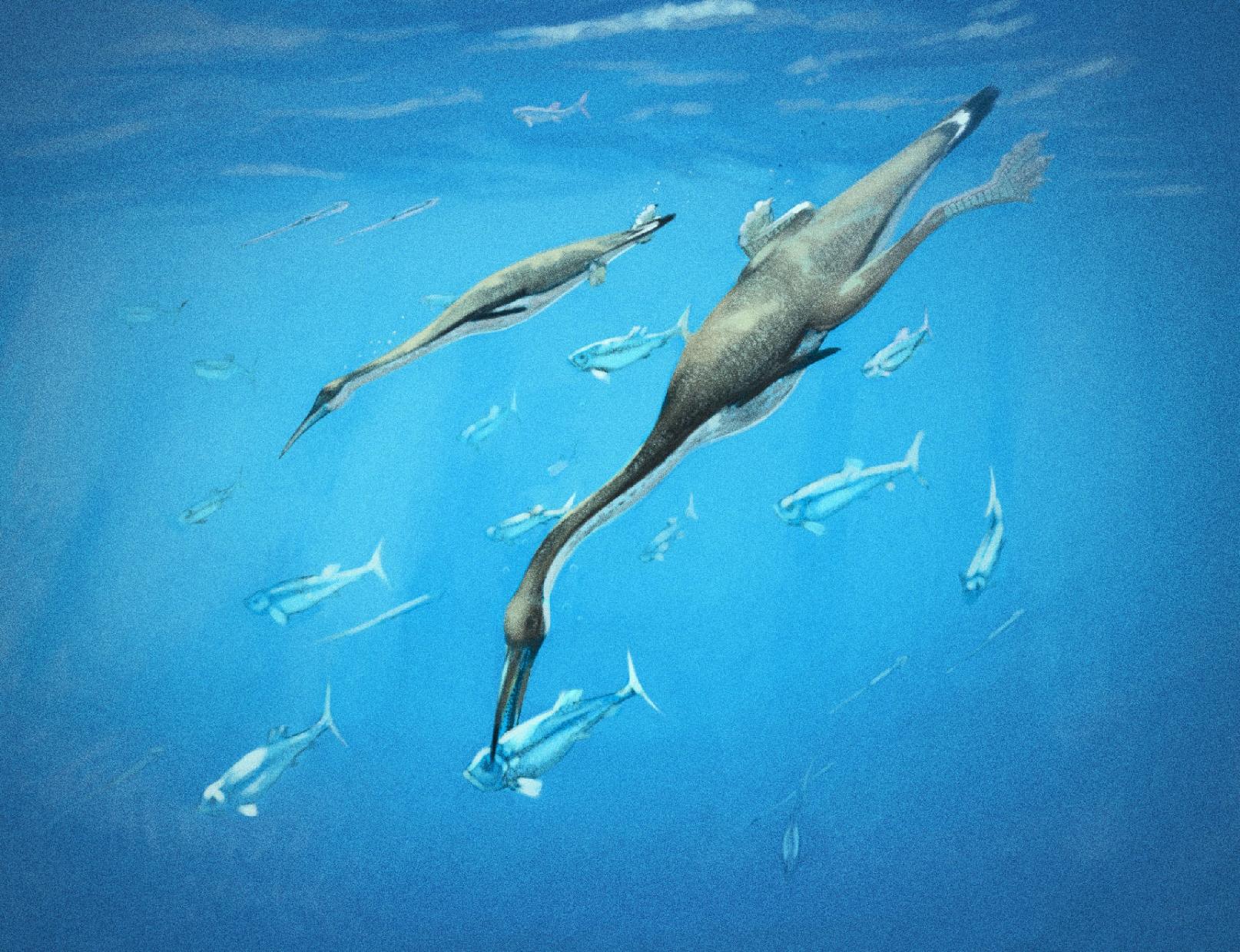
Dedicated to Dan Varner
All Yesterdays
Unique and Speculative Views of Dinosaurs and Other Prehistoric Animals
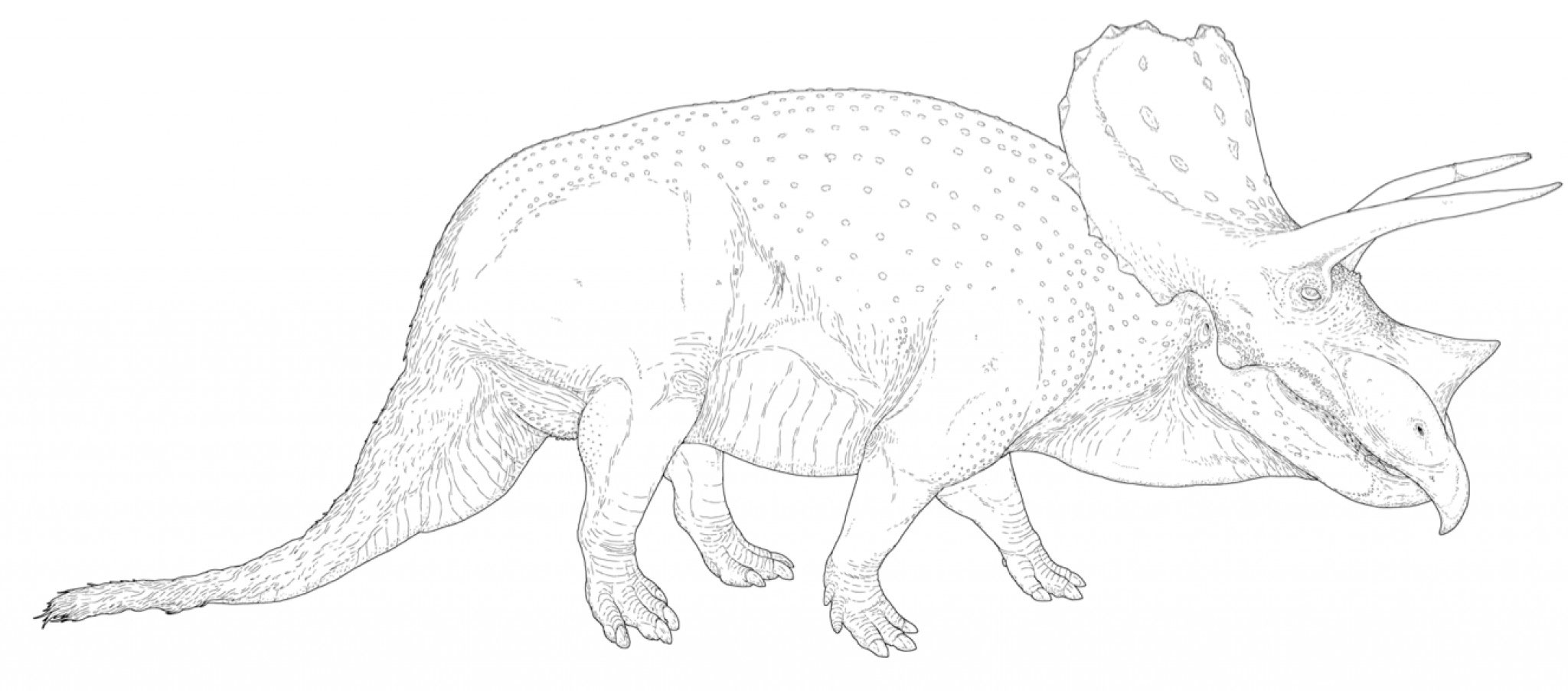
By John Conway, C. M. Kosemen and Darren Naish with skeletal reconstructions by Scott Hartman
Introduction, by Darren Naish
A desire to imagine the long-extinct organisms of the past as living, moving animals has long inspired artists and scientists to clothe bones and other fossil tissues in muscles, skin, fur and feathers. In other words, to bring fossil animals 'back to life' in art. We need to be clear from the start that-while there are many things that we're surely getting right-there are many other things that have to be regarded as 'known unknowns', and even as 'unknown unknowns'. It is these areas of doubt and speculation that form the focus of this book, the first ever devoted entirely to the more speculative aspects of palaeoart.
It is well known that the process of reconstructing a fossil animal involves a marriage of both hard data as well as a degree of informed speculation. That hard data involves such things as the lengths and widths of bones and other hard parts, and the positions of specific muscle groups present in living animals. While the creation of a bone-and-muscles-only reconstruction should be seen as the first step in the depiction of a fossil animal (and even as a presumably inescapable part of creating a reconstruction!), readers may be surprised to learn that many people who have reconstructed extinct animals have frequently done so without recourse to these vital steps.
We in fact know that this was true of some of the greatest and most influential palaeoartists of all time. The Czech master of ancient animals and landscapes Zdenk Burian (1905-1981), for example, best-guessed the life appearance of dinosaurs and other vertebrates by fleshing out museum-mounted skeleton on paper without the use of measurements. Rudolph F. Zallingers (1919-1995) animals most famously depicted in the Zallinger mural at Yales Peabody Museum of Natural History were clearly done with only a superficial reference to the skeletons of the species concerned. The pieces of art generated by these individuals remain brilliant, beautiful and wonderful, but the techniques they used were damaging to the contention that the reconstruction of fossil animals involves science as much as it does art. Indeed, this concept is reflected in the paraphrased claim Theres more than one way to reconstruct a dinosaur, and in the general idea that dinosaurs and other fossil animals can only be reconstructed approximately, or with substantial doubt about the most basic issues remaining.
So we must note to begin with that reconstructing a fossil animal is not a speculative process that has many possible outcomes, but a rigorous and evidence-led one where informed artists produce a technically accurate musculoskeletal reconstruction for a given animal. The problem comes with the integument the covering that involves the skin and all the things attached to it (scales, feathers, hairs and so on) as we'll see.
Most people interested in palaeoart are aware of, and follow, the high-fidelity musculoskeletal reconstructions produced by researcher and artist Greg Paul. Many of Paul's hypotheses and arguments about archosaur remains a classic, and (while now very dated) it is probably the best and most useful introduction to the sort of information an artist would need (though read on).
Paul's initial forays into the accurate reconstruction of archosaur musculature were the result of communication with Robert Bakker; in turn, both Paul and Bakker were inspired by Charles R. Knight's (1874-1953) discussions and depictions of animal anatomy. Knight is most famous for his many paintings of fossil dinosaurs and mammals, but he also illustrated living animals. His bookAnimal Drawing: Anatomy and Action for Artistsshould be obtained by anyone seriously interested in the subject. Therein, we see Knight's excellent attention to anatomical detail (especially in mammals), his knowledge of musculature, and his pioneering use of silhouetted outlines to show the extent of soft tissues around the skeleton. Here is the origin of the 'anatomically rigorous' movement in palaeoart. However, Knight was a paradox. He understood well the link between osteology and musculature, yet he gave dinosaurs small, slender muscles that did not match their bones (dinosaurs actually seem to have had enormous, more bird-like muscles), and frequently drew dinosaurs freehand-style, again with what looks like poor attention to the proportions and nuances of the actual skeletons.

